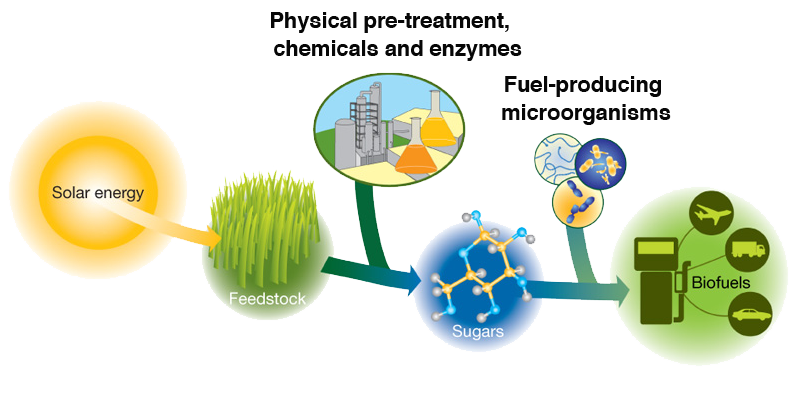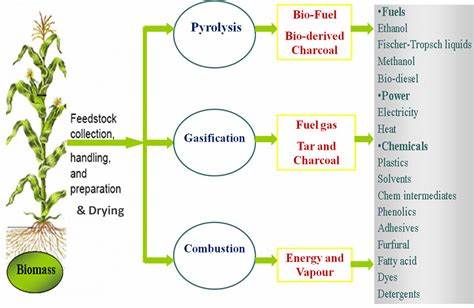
Conversion Technologies: Turning Biomass into Biofuels
Introduction
Finding sustainable and renewable sources of energy is becoming increasingly essential in today’s world. One such source is biomass, which includes organic materials like crops, wood, and agricultural waste. Conversion technologies provide a way to transform biomass into biofuels, offering a cleaner alternative to fossil fuels. This comprehensive article explores the various aspects of conversion technologies and their significance in the pursuit of a greener future.
Historical Background
Biofuels have a long history, with early civilizations utilizing plant oils for heating and lighting. However, significant advancements in biofuel production were made in the 19th century. The industrial revolution and the discovery of petroleum shifted attention away from biofuels until the late 20th century, when concerns about climate change and dwindling fossil fuel reserves reignited interest in biomass conversion.
Key Concepts and Definitions
To understand conversion technologies, it is crucial to grasp the concepts of biomass and the different categories of conversion. Biomass refers to organic material derived from plants or animals. It can be categorized into three main types: agricultural residues, energy crops, and forestry residues. Conversion technologies can be broadly classified into thermochemical, biological, and chemical conversion.

Main Discussion Points
Thermochemical Conversion
Thermochemical conversion involves applying heat and pressure to biomass to produce biofuels. This method includes processes like pyrolysis, gasification, and liquefaction. Pyrolysis is the thermal decomposition of biomass in the absence of oxygen, resulting in the production of bio-oil, biochar, and syngas. Gasification converts biomass into a mixture of carbon monoxide and hydrogen gas, known as syngas. Liquefaction converts biomass into a liquid fuel similar to crude oil.
Biological Conversion
Biological conversion, also known as bioconversion, utilizes microorganisms to break down biomass and produce biofuels. The two key technologies in this category are anaerobic digestion and fermentation. Anaerobic digestion occurs in the absence of oxygen and involves the breakdown of organic matter by bacteria, resulting in the production of biogas. Fermentation is the process where microorganisms convert sugars into alcohol, such as ethanol.
Chemical Conversion
Chemical conversion involves using chemical reactions to convert biomass into biofuels. Key technologies in this category include hydrothermal liquefaction and hydroprocessing. Hydrothermal liquefaction converts wet biomass into a crude-like oil through high temperature and pressure. Hydroprocessing utilizes catalysts and hydrogen to convert biomass into liquid hydrocarbon fuels.

Case Studies or Examples
One example of biomass conversion is the production of bioethanol from corn, which utilizes conversion technologies such as fermentation and distillation. The process involves breaking down corn starch into sugars, fermenting the sugars with yeast to produce ethanol, and purifying the ethanol through distillation. This widely implemented process has proven successful for bioethanol production.
Another example is biogas production from organic waste, which uses technologies like anaerobic digestion. Organic waste, such as food scraps and agricultural residues, is broken down into biogas through anaerobic digestion. The biogas can be used as a source of renewable energy for heating, electricity generation, and transportation.
Current Trends or Developments
Advancements in conversion technologies have led to increased efficiency and scalability. Researchers are continuously exploring new methods and techniques to enhance the conversion process. Government policies and incentives are also encouraging the adoption of biofuels, resulting in increased investment and research in this field.
Challenges or Controversies
While conversion technologies offer promising solutions, there are challenges and controversies surrounding their implementation. Environmental concerns include greenhouse gas emissions during the conversion process and the sustainability of biomass resources. The competition between biofuel crops and food crops raises concerns about food security. Additionally, the economic viability and commercial-scale implementation of conversion technologies present challenges that need to be addressed.

Future Outlook
The future of conversion technologies looks promising, with potential advancements and improvements. Integration with renewable energy systems like wind and solar can enhance the overall sustainability and efficiency of biofuel production. Furthermore, the utilization of biofuels to reduce carbon emissions can contribute to mitigating climate change.
Conclusion
Conversion technologies play a crucial role in turning biomass into biofuels, offering a viable and sustainable alternative to traditional fossil fuels. Thermochemical, biological, and chemical conversion methods each have their advantages and limitations, depending on the specific biomass and desired biofuel. Despite challenges and controversies, the potential of conversion technologies in reducing carbon emissions and mitigating climate change cannot be overlooked.




